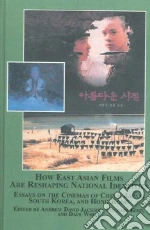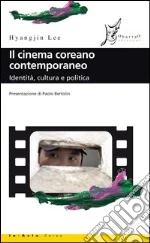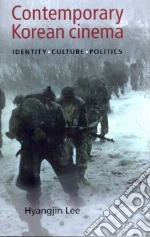 Libri di Lee Hyangjin su Unilibro.it
)
Libri di Lee Hyangjin su Unilibro.it
)
|
|
2007 |
 Title :
How East Asian Films Are Reshaping National Identities
Title :
How East Asian Films Are Reshaping National IdentitiesAuthor: Jackson Andrew David (EDT), Gibb Michael (EDT), White Dave (EDT), Lee Hyangjin (FRW) Publisher: Edwin Mellen Pr In presenting this collection of 13 essays exploring East Asian cinema, editors Jackson (a student of Korean history at London U., UK), Gibb (East Asian Cinema, City U. of Hong Kong, China), and White (Tokai Gakuen U., Japan) de-emphasize the recent focus on Western globalization and modernization as shapers of Asian identity and instead focus issues of national and regional identity and history and trans-regional cultural flows since 1945. Topics discussed include thematic concerns of natural culturalism in Shohei Imamura's Narayamabushi-kô (The Ballad of Narayama); history and national myth in filmic portrayals of China's Opium War; cinematic representations of the Chinese Cultural Revolution; responses to modernity in South Korean film; portrayals of the Mainland Chinese 'Other' in Hong Kong commercial film; representations of Japanese minorities in recent Japanese film; cinematic cooperation between China and Hong Kong, and discourse of regionalism in Dong fang bu bai 2: zhi feng yun zai qi (The East is Red) and Wo hu cang long (Crouching Tiger, Hidden Dragon). Annotation ©2007 Book News, Inc., Portland, OR (booknews.com) € 118,60
|
|
|
2006 |
 Title :
Il cinema coreano contemporaneo. Identità, cultura e politica
Title :
Il cinema coreano contemporaneo. Identità, cultura e politicaAuthor: Hyangjin Lee Publisher: O Barra o Edizioni Un'analisi dei film più significativi prodotti in Corea del Nord e del Sud svela le motivazioni culturali e ideologiche sottese alle singole opere. 'Un film è un testo culturale prodotto nella società' e una fonte a cui attingere per comprenderne i valori. L'autrice si avvale di materiali inediti provenienti sia dal Nord che dal Sud e osserva cinema e cultura nei loro rimandi continui evidenziando le antiche radici comuni, la fondamentale unità culturale e le profonde divergenze nate nella Corea politicamente divisa. Il testo ripercorre nella sua interezza lo sviluppo del cinema coreano, dagli esordi nel 1903 al consolidamento avvenuto durante il periodo coloniale giapponese (1910-45) fino all'affermazione dei giorni nostri, mettendo in luce la diversificazione dei film seguita alla divisione tra Nord e Sud. La realtà dell'industria cinematografica è osservata in termini di produzione, distribuzione e ricezione. Lo studio, allo stesso tempo affascinante e approfondito, si pone nel solco dei Cultural Studies. La ricchezza dei contenuti risponde al crescente interesse di critica e pubblico per il cinema coreano contemporaneo. Il volume è corredato di filmografia, bibliografia e indice analitico. € 22,50
|
|
|
2001 |
 Title :
Contemporary Korean Cinema
Title :
Contemporary Korean CinemaAuthor: Lee Hyangjin Publisher: Manchester Univ Pr This comprehensive book defines the significance of film-making and film viewing in Korea. Covering the introduction of motion pictures in 1903, Korean cinema during the Japanese colonial period (1910-45), and the development of North and South Korean cinema up to the 1990s, Lee introduces the works of Korea's major directors, and analyzes the Korean film industry in terms of production, distribution, and reception. € 38,50
|